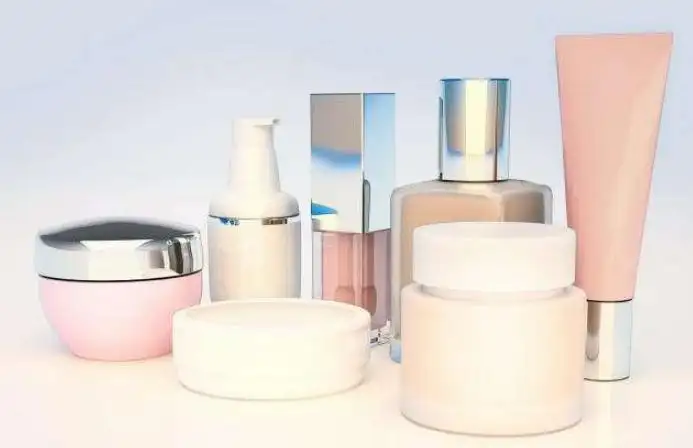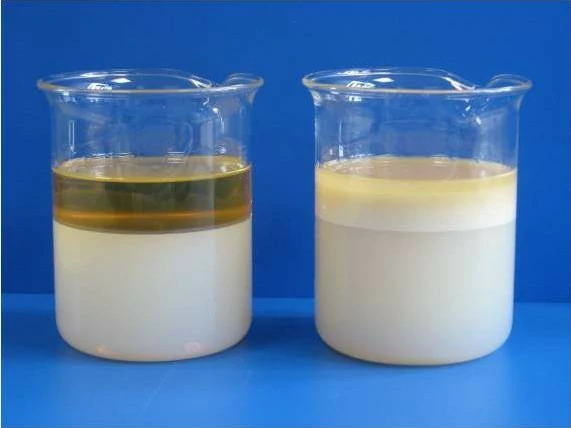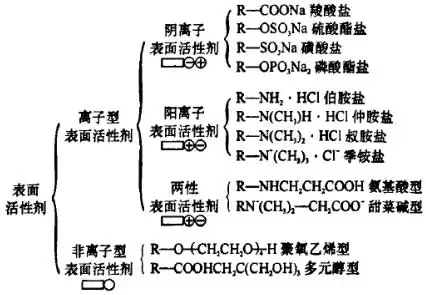What are the roles of surfactants in cosmetics?
Surfactant is a substance with a very special chemical structure and is widely used in the cosmetic industry. It is an auxiliary raw material in cosmetic raw materials, and although the amount is small, it plays a great role and is used in most products such as facial cleanser, emulsion, skin cream, shampoo, conditioner and toothpaste. Its role in cosmetics is diverse, the main role is manifested as: emulsification, washing, foaming, solubilization, sterilization, anti-static, dispersion, etc.

I. Emulsifying effect
What is emulsification? As we all know, the creams and lotions that we usually use most often contain both oily ingredients and a lot of water, they are a mixture of two types of substances formed by oily ingredients and water, but why do we not see either the oil droplets inside or the water seeping out in the naked eye state? This is because they have formed a very evenly mixed dispersion system, i.e. the oily ingredients are evenly dispersed in water in the form of tiny droplets, or water is evenly dispersed in the oily ingredients in the form of tiny droplets, the former we call water-in-oil, the latter oil-in-water, this type of cosmetics we call emulsion cosmetics, it is one of the most common types of cosmetics. However, under normal circumstances, oil and water are insoluble in each other, and after stirring stops, oil and water return to a layered state and cannot achieve a stable and uniform dispersion system, while creams and lotions, which are emulsion products, can form a mixed and uniform dispersion system with water because of the addition of surfactants, and the special structure of surfactants can make the insoluble oil and water substances evenly mixed together and form a The special structure of the surfactant can make the mutually immiscible oil and water mix together evenly and form a relatively stable dispersion system, i.e., an emulsion, and the role played by the surfactant in the emulsion is called emulsification, and we call the surfactant that plays the role of emulsification an emulsifier. Therefore, surfactants are present in the creams and lotions we use every day.

II.Washing, foaming role
Some surfactants have a very good washing and foaming effect, we are very familiar with soap is a very common type of surfactant, we use soap, soap is the use of soap ingredients (surfactants) to achieve the role of cleaning, foaming, some facial cleansers are also played by the soap ingredients inside the cleaning effect, but the soap ingredients cleaning power is strong, easy to cause skin degreasing, and The irritation is also slightly stronger, so dry skin and sensitive skin should not use this type of skin cleansing products. In addition, bath soaps, shampoos, hand soaps, and toothpastes are all surfactants that play a role in cleaning and foaming.
III.Solubilizing effect
Surfactants can increase the solubility of substances that are insoluble or insoluble in water, so that they are completely dissolved in water and eventually form a transparent state. For example, if we want to add an oily ingredient with good emolliency to a transparent lotion, but the oil cannot be dissolved in water and can only float on the surface of the lotion in the form of small oil droplets, we can use the solubilizing effect of surfactants to make the oily ingredient dissolve well in the lotion by adding surfactants, and the product will finally present a good transparent appearance. However, it is important to note that the amount of oily ingredients that can be dissolved by solubilization is limited, and it is difficult to dissolve large amounts of oily ingredients in water by solubilization. Therefore, as the amount of oily ingredients increases, the amount of surfactant also needs to increase to emulsify the oily ingredients and water. This is why some lotions are opaque and milky, because there are more emollient oil ingredients in them and the surfactant emulsifies them with water.
Surfactants can be divided into four categories: anionic, cationic, amphoteric and nonionic, depending on their structural characteristics. Among them, anionic surfactants have better washing and foaming effects and are mostly used in cleaning products; cationic surfactants have better bactericidal, anti-static and hair-smoothing effects and are mostly used in hair conditioners; amphoteric surfactants have better washing, foam-stabilizing and thickening effects and are mostly used in cleaning products to supplement anionic surfactants, enhance the cleaning effect of products and reduce irritation; non Ionic surfactants are good at emulsification and solubilization and have low irritation, and are mostly used in creams, lotions and water-based products that require solubilization.

*Disclaimer: The content contained in this article comes from the Internet, WeChat public numbers and other public channels, and we maintain a neutral attitude toward the views expressed in the article. This article is for reference and exchange only. The copyright of the reproduced manuscript belongs to the original author and the institution, and if there is any infringementPlease contact Jetson Chemical for deletion
